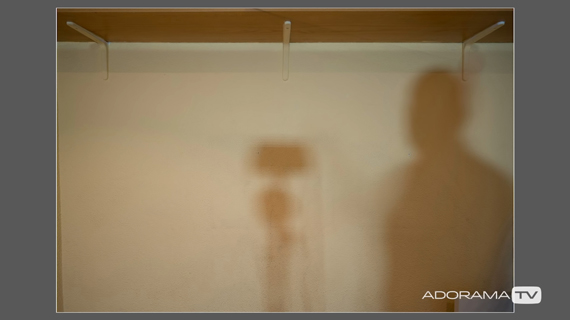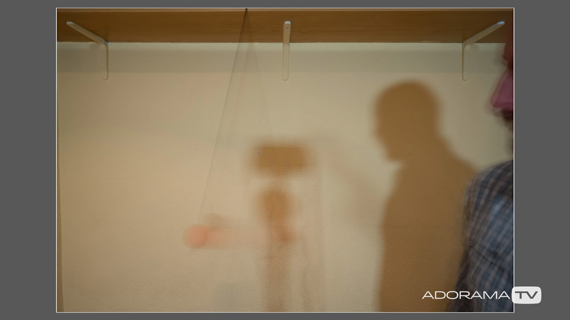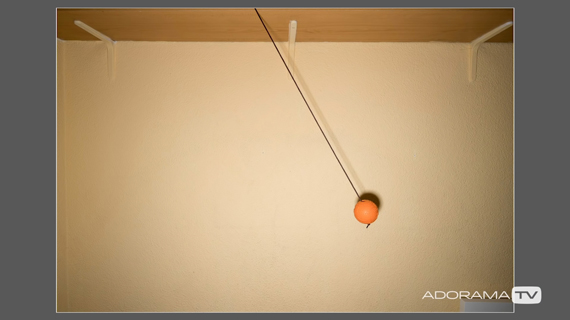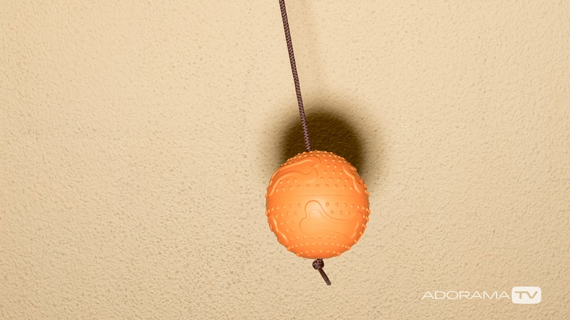In poorly lit conditions, slow shutter speeds let ample ambient light into the camera resulting in a good exposure. But the problem with slow shutter speed is that it will make moving subjects appear blurry. However, when a flash is used, even moving subjects appear frozen and sharp. Why does this happen? Photographer Mark Wallace from Adorama explains:
To emulate a subject’s motion, Wallace ties a ball to a shoelace and tapes it to a shelf. This way, the ball can swing around like a pendulum at a consistent rate.
How a Camera Sees Ambient Light
To demonstrate how a camera sees the subject only with ambient light, Wallace has his camera on a tripod and pre-focused on the ball manually. His camera is set to aperture priority mode with the aperture set at f/8. Using these setting and with the flash turned off, , here’s how the image turned out with a 1.5 second exposure:

1.5 seconds
Interestingly we cannot see the ball. Why does this happen? For a camera to record an image, ambient light has to strike the subject and go on to the sensor. But in this case, due to the continuous motion of the ball, it seems as if the ball is continuously dodging light. For the ball to appear in the image, it needs to stay in one place for the exposure duration. But if the ball moves slowly, light has more time to reflect off of it and onto the sensor to form an image. But since the ball is still moving, Wallace ends up getting a blurry image.

“The faster something moves, the less it’s going to show up in low ambient light. The slower something moves, the more it will show up.”
How a Camera Sees When Flash is Used
While we just saw that ambient light needs some time to soak in, a flash, on the other hand, works differently. All flashes have a flash duration during which they turn on, deliver all the light, and then turn off. For instance, most speed lights have a flash duration of about 1/10,000 second or faster, which is instantaneous.
Flash duration has the ability to freeze the motion of a subject. So, if you use flash for a subject in motion, you will be able to freeze the subject and get a sharp image. To demonstrate this, Wallace sets his shutter speed to 1/180 second and aperture to f/8 to cut off all the ambient light. This way, the camera will only be able to capture the light coming off of the flash. With these settings, he’s able to take the following image of the moving ball:

1/180 second plus flash
No matter how fast the ball moves, Wallace is able to get a clear and a sharp image.

If you’re eager to understand how flash can affect your photography, experiment with different aperture values, shutter speeds, and even different subject to flash distance. See how these changes affect the motion of the subject and you’ll have a clearer idea of how to deliberately freeze or blur motion in your images.
Go to full article: How Flash Duration Affects Subjects in Motion
What are your thoughts on this article? Join the discussion on Facebook
PictureCorrect subscribers can also learn more today with our #1 bestseller: The Photography Tutorial eBook
The post How Flash Duration Affects Subjects in Motion appeared first on PictureCorrect.
from PictureCorrect http://bit.ly/2UfLeWs
via IFTTT






0 kommenttia:
Lähetä kommentti